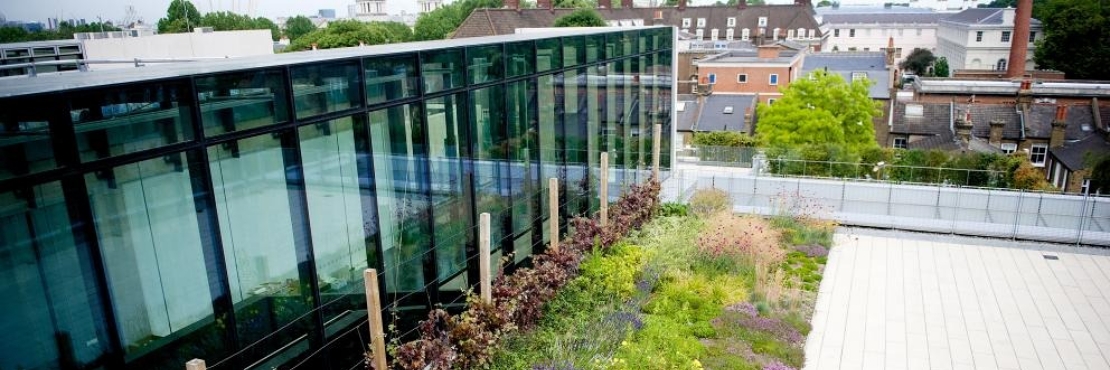Geoff Wilkinson of Architects' Journal writes:
As the government announces further commitments towards carbon reduction, one of the design trends we expect to see in 2021 is the wider take-up of green roofs.
If you want to carry out repairs on, or re-cover a pitched or flat roof, you will need approval, if:
- You carry out structural alterations or the loading of the roof covering significantly changes.
- The performance of the new covering will be significantly different to that of the existing covering in the event of a fire.
- You are replacing or repairing more than 25 per cent of the roof area.
The key building regulations issues are to do with structure, fire safety and thermal insulation performance.
Structure
The load-bearing capacity of a building must be known before planning a green roof and a structural engineer’s advice is essential. The loads can be significant, including plants, growing substrate and any water held in the system.
It is important to consider not just the weight of plants when planted but their weight at maturity, as these can be significantly heavier over time, and to allow for the weight of saturated plants and substrate, rather than dry weights. You also need to allow for short-term loads, including wind uplift, especially with larger shrubs. For retrofitting a green roof, it is important to establish early whether the installation will exceed the existing structural capacity of the building and the extent to which this will need to be modified to support the installation. In some instances, it is possible to strengthen an existing roof in strategic areas (and not across the whole roof) in order to achieve the design outcome while also minimizing costs.
If you are allowing access to the roof, then remember to allow for the weight of people who will use the space and of any mobile equipment that will be used. Also remember to provide roof safety railing systems and guarding to the roof edge.
Fire safety
In relation to fire performance, the general consensus is that, as long as the green roof is kept moist, it is likely to be highly resistant to ignition. It has been suggested that a green roof might constitute a fire hazard if it dries out (such as might happen in a drought if no irrigation is provided).
In 2013 the Ministry of Housing, Communities and Local Government commissioned a research report from Exova Warringtonfire, which concluded that the growing medium used in green roofs cannot be ignited and flame spread does not occur. Temperatures obtained at the lowest point in the green roof substrate are not high enough to result in ignition of the materials used below the growing layer, therefore green roofs are generally considered to be safe in the event of a fire.
Some care should be taken in the selection of the plants themselves. Succulents are generally considered the lowest fire risk, while conifers are among the highest. European guidelines recommend that 0.5m-wide gravel fire breaks should be provided around the edges of the roof, around openings penetrating the roof, and at 40m spacing on larger roofs.
Thermal insulation
The level of insulation a living roof can provide though depends on many factors such as moisture level. As moisture levels can vary enormously depending on seasonal factors, green roofs are not usually recognised in building regulations as having a U-value, so you will need to upgrade the insulation to the roof in the normal way.
That said, during the winter months thermal performance can be as much as 25 per cent higher following installation of a green roof. In the summer, a green roof has the ability to keep properties cooler than bare roofs by an average of 15°C, so installing a green roof covering can reduce the need for artificial cooling systems. Hopefully these benefits will be recognised in future versions of the regulations.
Geoff Wilkinson is managing director of Wilkinson Construction Consultants.
Read more: Three things you need to consider when retrofitting a green roof
 Greenroofs.comConnecting the Planet + Living Architecture
Greenroofs.comConnecting the Planet + Living Architecture





